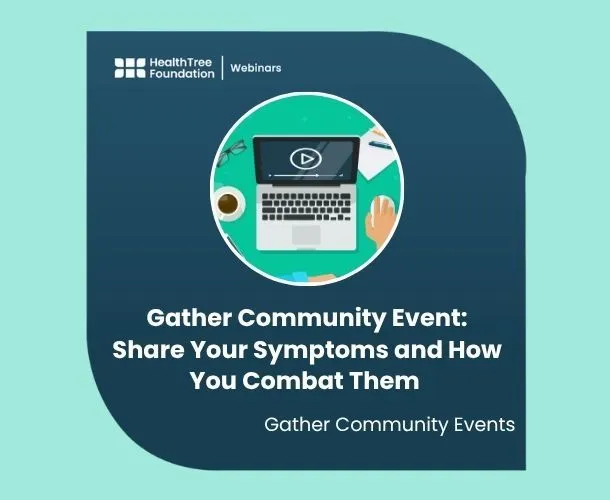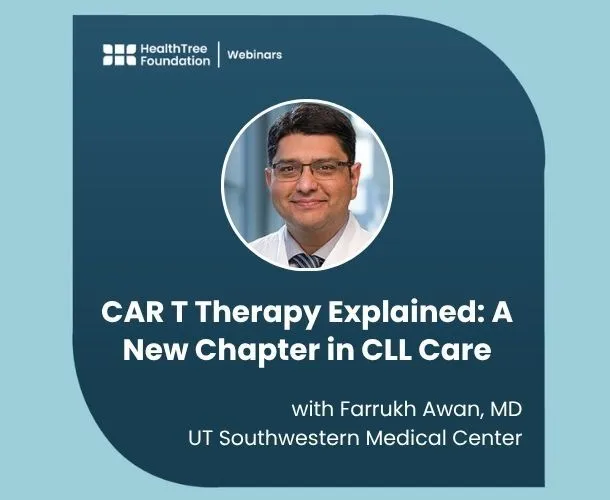Innovation of CLL Treatments: Chemotherapy Era

From the 1950's to the early 2000's, chemotherapy regimens were the main treatment combinations used to reduce cancerous CLL cells for patients. Now, chemotherapy is rarely used to treat CLL thanks to the advances of modern targeted therapies.
We feel it is important to understand the history of how CLL treatments have advanced over the years. Doing so will help us reflect on the important innovations of prior CLL therapies as we continue to advance treatment outcomes for patients and move toward a CLL cure.
The Beginning: Alkylating Agents
The story of chemotherapy for CLL starts with the introduction of alkylating agents in the 1950s. Drugs like chlorambucil and cyclophosphamide belong to this category. They work by damaging the DNA of cancer cells, slowing down their growth or killing them entirely. Chlorambucil was one of the first medications to demonstrate substantial remission rates in CLL patients. However, the remission success rate was not highly consistent, averaging around 30-40%. As well, patients reported a low health-related quality of life on this treatment.
Purine Analogs: A New Era
The 1980s and 1990s saw the advent of purine analogs, including medications like fludarabine and cladribine. These drugs inhibit the DNA-building process in cancer cells, preventing their division and growth. Fludarabine was a game-changer, with remission rates climbing up to 40-50%, significantly better than the earlier alkylating agents.
Combination Therapies
As we entered the 21st century, oncologists began to experiment with combination therapies. These regimens combined traditional chemotherapy drugs with new targeted treatments. One such combination is FCR—Fludarabine, Cyclophosphamide, and Rituximab. Rituximab is a monoclonal antibody that specifically targets and kills cancer cells. The FCR combination has shown remission results rates reaching up to 70-80%.
Targeted Therapies: Pinpoint Accuracy
The last decade has seen the rise of targeted therapies, like BTK inhibitors and venetoclax, that zero in on specific proteins or pathways used by cancer cells to grow and spread. Read here about the innovations of targeted therapies for CLL care.
What's Next?
Researchers are continuously exploring new medicines and combinations to increase remission rates and reduce side effects. With advancements in targeted therapies and immunotherapies, the future looks bright for CLL patients.
From the beginnings of alkylating agents to the rise of targeted therapies, the history of chemotherapy for CLL is a story of progress. While we still have a long way to go, the advances in treatment over the past few decades offer hope and a significantly better quality of life for CLL patients.
We Invite You to Participate in the Future of CLL Care
HealthTree’s community has seen that patients and their caregivers who are involved in learning about the cancer end up getting better treatment outcomes. We invite you to use HealthTree’s programs to educate yourself about the facets of this disease. Doing so will prepare you to be an active participant in advancing toward a cure for CLL through participating in research.
We invite you to the HealthTree 2.0 virtual launch to learn about the new and improved HealthTree model, our goals, and how you can be involved in our upcoming HealthTree 2.0 event. Invite your friends & family and join us on October 23, 2023, through virtual watch parties to hear how you can get your best care and contribute to accelerating a CLL cure.
From the 1950's to the early 2000's, chemotherapy regimens were the main treatment combinations used to reduce cancerous CLL cells for patients. Now, chemotherapy is rarely used to treat CLL thanks to the advances of modern targeted therapies.
We feel it is important to understand the history of how CLL treatments have advanced over the years. Doing so will help us reflect on the important innovations of prior CLL therapies as we continue to advance treatment outcomes for patients and move toward a CLL cure.
The Beginning: Alkylating Agents
The story of chemotherapy for CLL starts with the introduction of alkylating agents in the 1950s. Drugs like chlorambucil and cyclophosphamide belong to this category. They work by damaging the DNA of cancer cells, slowing down their growth or killing them entirely. Chlorambucil was one of the first medications to demonstrate substantial remission rates in CLL patients. However, the remission success rate was not highly consistent, averaging around 30-40%. As well, patients reported a low health-related quality of life on this treatment.
Purine Analogs: A New Era
The 1980s and 1990s saw the advent of purine analogs, including medications like fludarabine and cladribine. These drugs inhibit the DNA-building process in cancer cells, preventing their division and growth. Fludarabine was a game-changer, with remission rates climbing up to 40-50%, significantly better than the earlier alkylating agents.
Combination Therapies
As we entered the 21st century, oncologists began to experiment with combination therapies. These regimens combined traditional chemotherapy drugs with new targeted treatments. One such combination is FCR—Fludarabine, Cyclophosphamide, and Rituximab. Rituximab is a monoclonal antibody that specifically targets and kills cancer cells. The FCR combination has shown remission results rates reaching up to 70-80%.
Targeted Therapies: Pinpoint Accuracy
The last decade has seen the rise of targeted therapies, like BTK inhibitors and venetoclax, that zero in on specific proteins or pathways used by cancer cells to grow and spread. Read here about the innovations of targeted therapies for CLL care.
What's Next?
Researchers are continuously exploring new medicines and combinations to increase remission rates and reduce side effects. With advancements in targeted therapies and immunotherapies, the future looks bright for CLL patients.
From the beginnings of alkylating agents to the rise of targeted therapies, the history of chemotherapy for CLL is a story of progress. While we still have a long way to go, the advances in treatment over the past few decades offer hope and a significantly better quality of life for CLL patients.
We Invite You to Participate in the Future of CLL Care
HealthTree’s community has seen that patients and their caregivers who are involved in learning about the cancer end up getting better treatment outcomes. We invite you to use HealthTree’s programs to educate yourself about the facets of this disease. Doing so will prepare you to be an active participant in advancing toward a cure for CLL through participating in research.
We invite you to the HealthTree 2.0 virtual launch to learn about the new and improved HealthTree model, our goals, and how you can be involved in our upcoming HealthTree 2.0 event. Invite your friends & family and join us on October 23, 2023, through virtual watch parties to hear how you can get your best care and contribute to accelerating a CLL cure.

about the author
Megan Heaps
Megan joined HealthTree in 2022. She enjoys helping patients and their care partners understand the various aspects of the cancer. This understanding enables them to better advocate for themselves and improve their treatment outcomes.
More on Navigating Your Health
Trending Articles

Get the Latest Chronic Lymphocytic Leukemia Updates, Delivered to You.
By subscribing to the HealthTree newsletter, you'll receive the latest research, treatment updates, and expert insights to help you navigate your health.











